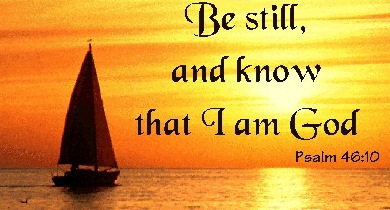NEW SCHOOL PRAYER GUIDELINES




The attached article discusses the new guidelines for prayer in schools. It appeared
in K-House eNews by Chuck Missler. These new guidelines are a
great step in the right direction. There are two related links at the end of the page which provide more detailed information. Let your friends, especially those
with kids in school, know about the expansion of their rights to pray, read
their Bibles, and share their faith in school.
God bless you,
Life Quest

GUIDELINES
FOR PRAYER IN SCHOOLS
After the landmark 1962 Supreme
Court decision Engle vs. Vitale, which ended school-sponsored prayer in
American public schools, there has been confusion over whether students or
teachers are allowed to pray, read their Bibles or engage in other religious
activity on school grounds. This confusion has resulted in the violation of
students' rights to religious expression, and lawsuits have ensued over issues
as simple as a student's right to pray before lunch in the cafeteria.
According to the First Amendment
to the U.S. Constitution, "Congress shall make no law respecting an
establishment of religion, or prohibiting the free exercise thereof; or
abridging the freedom of speech…" For years, the establishment clause of
the First Amendment has been used to shove religious expression from American
public life, to the damage of the "free exercise thereof" and
"freedom of speech" clauses of that same Amendment. In August of
1995, the Secretary of Education issued guidelines on Religious Expression in
Public Schools to clarify which activities were and were not constitutional and
to prevent religious discrimination against public school students.
On February 7, 2003, current
Secretary Rod Paige issued a similar set of guidelines, updated under the No
Child Left Behind Act of 2001 to make adherence to the guidelines a requirement
for receiving federal funding. Under the new guidelines, once a year schools
will have to submit in writing to their state education agency that they are
following the guidelines in good faith. Those who fail to attest to their
compliance in writing, and those who have been faulted for failing to obey the
guidelines, risk losing their federal funding.
The new guidelines clarify the
rights of students to pray and read their Bibles in public schools during
school hours. "As the Court has explained in several cases, 'there is a
crucial difference between government speech endorsing
religion, which the Establishment Clause forbids, and private
speech endorsing religion, which the Free Speech and Free Exercise Clauses
protect,'" the guidelines state. Schools must neither encourage or
discourage religious expression, and may not discriminate against activity
simply because it is religious in nature. As long as students initiate the
religious activity themselves, and as long as the religious expression falls
within the schools' rules of order, it cannot be discriminated against. If
students have free time during which they may engage in non-religious
activities - recess, lunch-time, and so forth - then they may also use that
time for religious activities such as prayer. Students may form prayer groups
or religious clubs "to the same extent that students are permitted to
organize other non-curricular student activities groups." If schools allow
non-religious groups to promote their activities through posters or school
newspapers, then religious groups, like Bible or prayer clubs, must also be
allowed to promote their activities.
The rights of teachers are also
included in the guidelines. While teachers must remain neutral and neither
encourage or discourage their students' religious expression, teachers may pray
or study the Bible by themselves or with other teachers.
The guidelines are causing
controversy, however, because they include a new section condoning student
prayer at assemblies. According to the guidelines, "Student speakers at
student assemblies and extracurricular activities such as sporting events may
not be selected on a basis that either favors or disfavors religious speech.
Where student speakers are selected on the basis of genuinely neutral,
evenhanded criteria and retain primary control over the content of their
expression, that expression is not attributable to the school and therefore may
not be restricted because of its religious (or anti-religious) content."
Barry Lynn, head of Americans
United for Separation of Church and State, criticizes this position, stating
that the courts are still not settled on the issue of student-initiated prayer,
and arguing that the Bush administration has put its own interpretation into
the guidelines. However, Kevin Hasson, president of the Washington-based Becket
Fund for Religious Liberty, countered him. "What the guideline says is
that if [prayer] is truly student-initiated -- if it’s not rigged by the school
district somehow -- then the First Amendment protects it." This issue will
likely cause considerable debate until it is resolved by the courts.
Schools and teachers, parents and
students should discuss the new guidelines and become familiar with the
religious freedoms students have in the public schools. They need to know they
do not "shed their constitutional rights to freedom of speech or
expression at the schoolhouse gate."
Related Links:
• Guidance on Constitutionally
Protected Prayer - U.S. Dept of Ed
• Archived Information on School Prayer - U.S. Dept
of Ed
